
OBJECTIVE OF TEN: The player who earns the most points by creating sequences wins the game
NUMBER OF PLAYERS: 1 – 5 players
CONTENTS: 129 cards, 5 reference cards, 50 currency tokens, 15 bust tokens, 1 rulebook
TYPE OF GAME: Auction Card Game
AUDIENCE: Ages 10+
INTRODUCTION OF TEN
Ten is a family friendly auction card game. On their turn, players draw as many cards as they can without busting. Cards can also be purchased using the currency tokens. What do players do with the cards? Build sequences! At the end of the game, points are awarded for the longest sequence of each color collected. Bonus points are earned for a perfect sequence of 1 through 9. The player with the most points at the end of the game wins.
CONTENTS
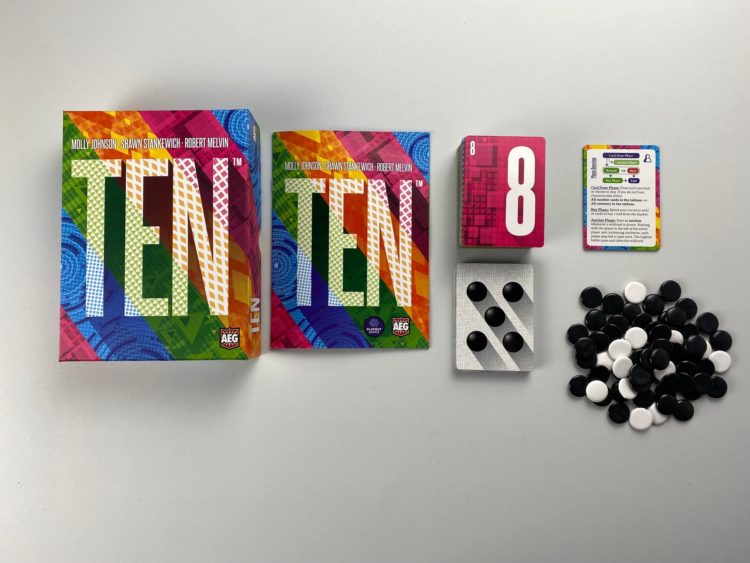
The 129 card deck has four colored suits: red, blue, orange, and green. Each suit has 23 cards ranked 1 – 9. There are three sets of cards numbered 1 – 3, three sets numbered 4 – 6, and one set of cards numbered 7 – 9. Each suit also has two # wild cards that can be any number for that color.

There are ten numbered Wildcards that can be used to represent any color needed. There is one # Wildcard that can be used to represent any color and number.
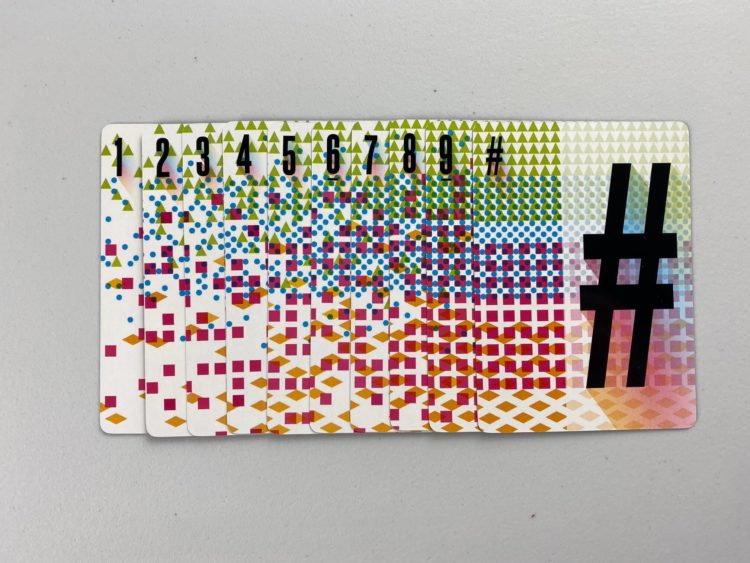
There are 27 currency cards numbered 1 – 5.
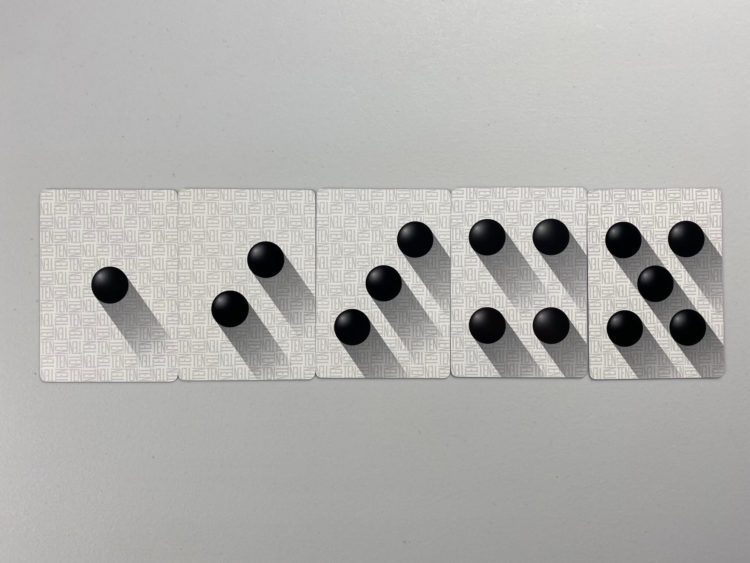
The 50 black currency tokens and the 15 white bust tokens can be used to purchase cards during the game.
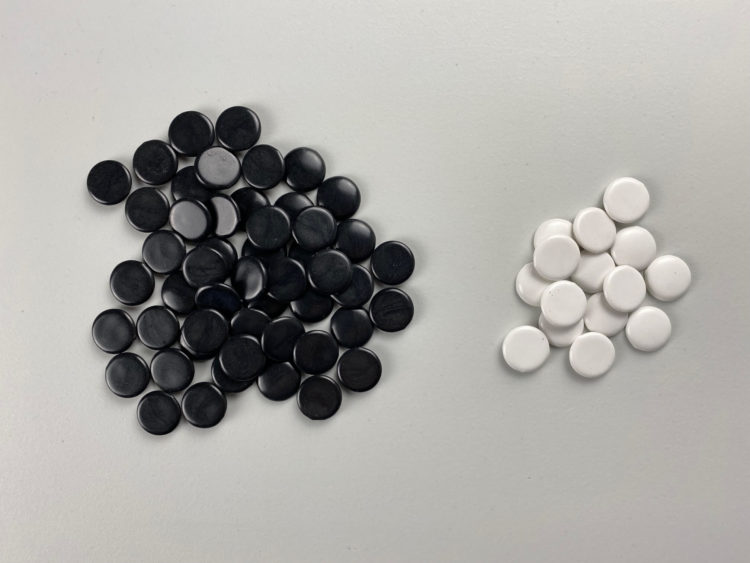
SETUP
Setup for the game depends on the number of players. Some cards have a symbol in the bottom right corner that denotes whether or not it is pulled from the deck. For a game with 4 or 5 players, all of the cards are used. For a 3 player game, remove all of the cards with the 4+ symbol. For a 2 player game, remove all of the cards with a 4+ and 3 player symbol.
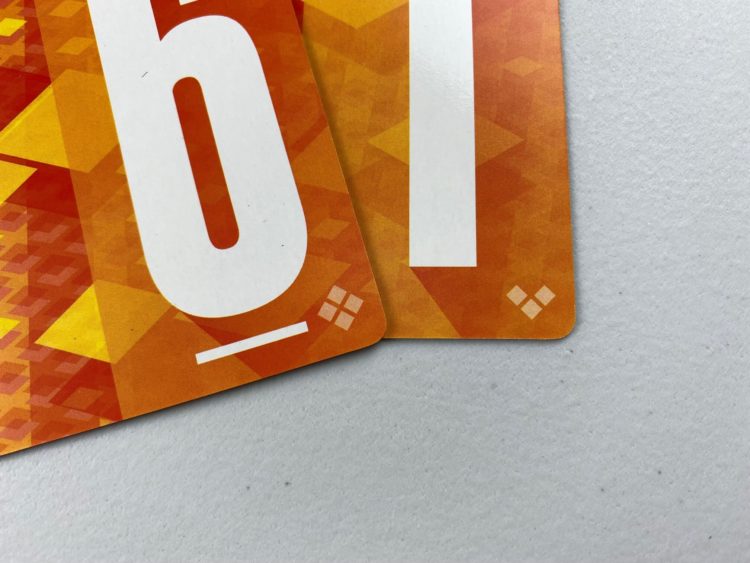
Once the deck is ready, place it face down in the center of the table to form the draw pile.
Give each player 5 black currency tokens. Place the rest of the black currency and white bust tokens in the center of the table near the draw pile. This forms the supply pile. Currency and bust tokens that are spent during the game are returned to the supply pile.
Give each player one reference card. The player who receives the reference card with the starting player symbol goes first.
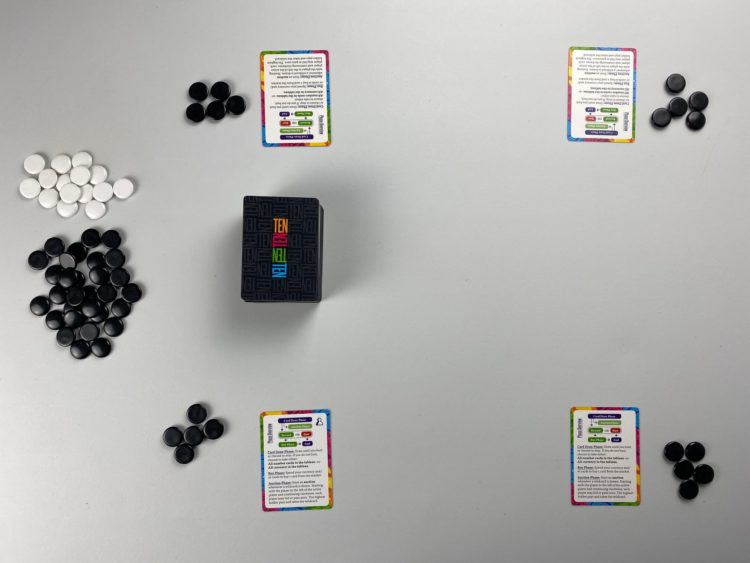
THE PLAY
Each player’s turn will begin with the card draw phase. A player may draw cards until they wish to stop and claim their reward or until they bust. If a Wildcard is drawn, an auction phase will occur. The final phase for a turn is the buy phase.
CARD DRAW PHASE
At the start of the turn, a player draws cards one at a time from the draw pile. Number and currency cards are placed on the table face up in a row. This forms the tableau. If a drawn card is a Wildcard of any sort, drawing stops and an auction commences.
After each card, the player must decide to stop and take their reward or keep drawing. The turn ends once a player takes the reward or they bust.
Each non-wild card they draw either adds to or subtracts from a running total. A player busts if they draw number cards that add up to a value of 11 or more. Currency cards reduce the running total equal to the value of the cards. However, if a player’s currency card total reaches 11 or more, they bust.
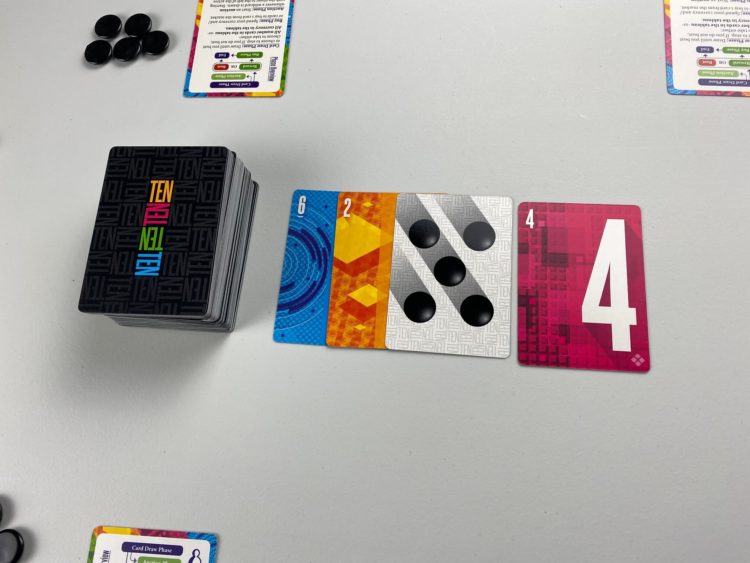
TAKE A REWARD
When a player chooses to end their turn before busting, they may take one of the following rewards: collect all the number cards in the tableau -or- collect all of the currency in the tableau.
When a player collects the number cards, all the other players at the table collect the currency value in the tableau. They take that many currency tokens from the supply. A player may have no more than ten currency tokens at one time. If they were to gain a number of currency tokens that would put their total over ten, they do not collect the excess. Bust tokens do not count toward the total of ten.
When a player chooses to collect the currency in the tableau, they collect that many currency tokens from the supply. The number cards that are in the tableau are moved over to the market. A player who chooses to take the currency may not have a buy phase.
BUSTING
When a player busts, all of the number cards in the tableau are moved to the market. The player who busts collects one bust token from the supply. If the bust occurs due to number cards, all other players collect the tableau’s currency value from the supply. If the bust occurs due to currency cards, the currency cards are placed in the discard pile and no one collects anything.
A player’s turn ends once they have busted.
BUY PHASE
If a player does not bust and chooses to take the tableau’s number cards, they may have a buy phase. If they choose not to buy, their turn ends.
A player may spend their currency to buy one card from the market. To do so, the player must pay the value of the card in currency from their own stash. The currency spent is placed back in the supply. Bust tokens cannot be broken up to meet a cost exactly. They are always worth 3. If a player has to spend more than the value of a card, they simply lose the excess value.
A player can also choose to spend the cards they have collected rather than currency. Each card counts as 1 toward their total currency. Cards can be combined with currency tokens.
Players cannot buy a card that is identical in color and number as a card they already have.
Once a player completes the buy phase, their turn ends.
AUCTION PHASE
A player’s turn is immediately interrupted with an auction whenever they draw a Wildcard. This includes any wild number cards or wild # cards.
The auction begins with the player seated left of the player taking their turn. They have one opportunity to state how much they will spend on the card. If they do not want to participate in the auction, they say pass. Each following player gets a chance to pay more for the card or pass. The player taking their turn gets to go last. Whoever offered the most currency for the card wins it.
Once the auction concludes, the player who drew the wild continues their turn.
Remember, Wildcards are flexible and do not have to be assigned to a sequence until the end of the game.
ENDING THE GAME
The game ends after the final card has been drawn. That player completes their turn as usual without drawing any more cards.
Starting with the player seated left of the final player, each person gets one more buy phase. Once the final buy phase is complete, the game ends, and it is time to tally up the scores.
SCORING
Players must finalize their sequences and determine how their Wildcards will be used. Wildcards can only be used once. They cannot move from sequence to sequence.
Points are scored for cards within each color’s longest sequence. For example, if Player 1 has 1,2,3,5,7 of blue, they would earn three points for the sequence of 1,2,3. The 5 and 7 does nothing for them.
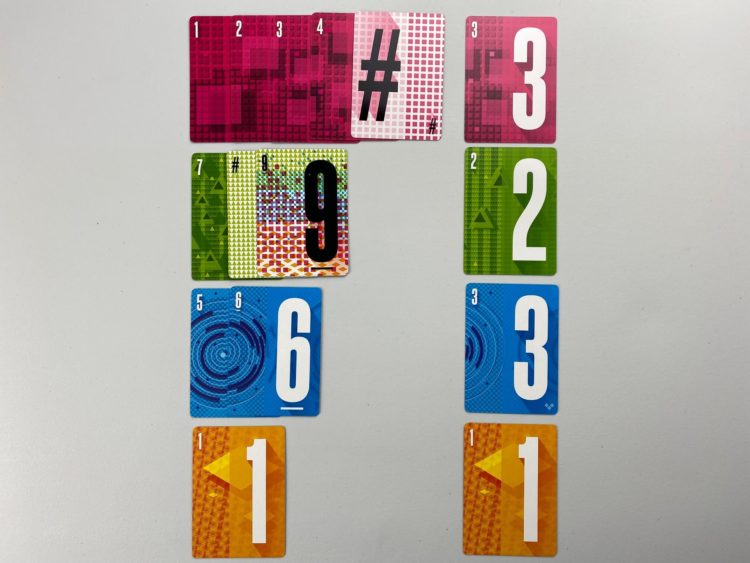
In the example above, the player would earn 11 points for the game – 5 from red, 3 from green, 2 from blue, and 1 from orange.
WINNING
The player with the most points at the end of the game is the winner. If there is a tie, the player with the most currency tokens (bust tokens are not included) wins the game. If there is still a tie, the player with the fewest cards wins. Still tied? The victory is shared.
- TRIPLE SNAKES - February 15, 2021